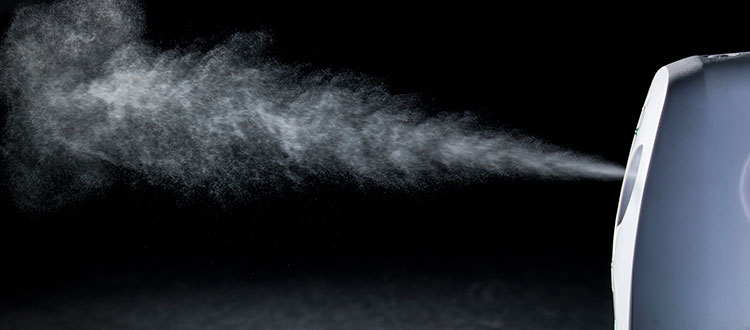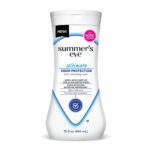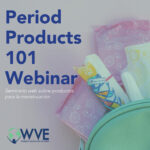How well is the fragrance industry managing the toxicity of fragrance ingredients?
 |
| Alex Scranton Director of Science and Research |
Since the fragrance industry is largely self-regulated, this is an important question to ask.
The fragrance industry claims that they are reviewing the safety of fragrance chemicals, using a panel of independent experts who review all the data and publish their findings. In addition, they establish self-imposed restrictions (and occasionally bans) on certain fragrance ingredients which are called the “IFRA standards”, which are meant to further enhance the safety of fragrance. And the manufacturers of fragranced products are largely counting on the fragrance industry to supply them with safe fragrances. But the question remains – how well is the industry prioritizing which ingredients to review, and which ones need restrictions or bans? Is the fragrance industry avoiding making decisions on the most problematic fragrance chemicals by focusing efforts on the less problematic chemicals first? (SPOILER ALERT: Sure looks that way.)
To figure this out, we used a tool called the GreenScreen List Translator, which does a pretty good job of assessing which chemicals have been flagged as potentially toxic by determining if they have been included in authoritative “chemicals of concern” lists from around the world. Basically, the List Translator can tell you whether or not scientists who study chemical safety for governments or other authoritative scientific bodies are already concerned about the toxicity of a specific chemical. The List Translator Score for a chemical provides a further sense of how much research is available to back up that concern. The List Translator is commonly used by companies around the world to help them identify and prioritize the chemicals they use which need more scrutiny on safety.
It seems logical that the fragrance industry should also be prioritizing their review of the fragrance chemicals that are deemed most likely to be problematic.
So we took a look at the chemicals that the fragrance industry has prioritized for review. Since 2003, the fragrance industry has been actively reviewing the safety of fragrance chemicals and publishing their findings in a scientific journal. In those 15 years, they have published safety assessments of almost 500 of the nearly 4,000 fragrance chemicals currently in use. So we looked at the list of all the chemicals that the fragrance industry has reviewed and compared this to the GreenScreen List Translator scores for all fragrance ingredients. What we found was rather shocking.
There are 11 fragrance chemicals rated Benchmark-1: “Avoid – Chemical of High Concern” and there are NO published safety reviews for any of them, and there are no IFRA standards issued for any of them, meaning the industry has avoided looking into the safety of the most problematic chemicals and “allow” manufacturers to use unlimited amounts of these chemicals in any fragrance.
There are 27 fragrance chemicals rated LT-1: List Translator Likely Benchmark 1 and there are no published safety reviews for any of them either, and there are IFRA standards issued for just three of them.
There are 1,203 fragrance chemicals that have been rated LT-P1: List Translator Possible Benchmark 1 and there are published safety reviews for less than one-third of them, and IFRA standards have only been issued on about six percent of them.
What does this tell us?
- For one, it tells us that about one third of all the fragrance chemicals currently in use have been flagged as potentially toxic by scientists around the world.
- Secondly, it tells us that the fragrance industry is simply not taking action (through safety reviews or issuing IFRA standards) on the most problematic chemicals they are using.
- Thirdly, the lack of action on these most toxic fragrance chemicals is leading to uncontrolled use of these chemicals by manufacturers of fragranced products.
This means that the fragrance chemicals manufacturers have to work with are largely toxic. And — as new testing shows — they are ending up in our homes. This week, Breast Cancer Prevention Partners (BCPP), released a report titled Right to Know: Exposing Toxic Fragrance Chemicals, that clearly revealed the presence of harmful fragrance chemicals linked to cancer, hormone disruption, reproductive harm, and respiratory toxicity in a variety of household products. In fact, fragrance chemicals made up the vast majority of chemicals linked to adverse chronic health effects in the products tested – ¾ of the toxic chemicals found in the tested products were fragrance chemicals.
Chances are that the fragrances used in these products fully comply with the IFRA standards, as most of the market does. Compliance with the IFRA standards however, is little consolation given that it still means the presence of highly toxic chemicals is likely.
TAKE ACTION
Elected officials can reduce our exposure to harmful chemicals and make products safer by requiring that companies fully reveal the identity – and safety – of secret fragrances.
To address the use of harmful chemicals and ingredient secrets in personal care/cosmetics, four new bills — also referred to as the Safer Beauty Bill Package — have been introduced in Congress:
- Toxic Free Beauty Act (HR 5537): Bans 11 of the most toxic chemicals on the planet from beauty and personal care products sold in the U.S., including mercury; 4 types of formaldehyde (plus Quaternium-15, Paraformaldehyde, Methylene Glycol); m-phenylenediamine and o-phenylenediamine; Diethylhexyl phthalate; Dibutyl phthalate; Isobutylparaben and Isopropylparaben and the entire class of perfluoroalkyl and polyfluoroalkyl substances (PFAS).
- Cosmetic Fragrance and Flavor Ingredient Right to Know Act (HR 5538): Requires disclosure of toxic fragrance and flavor chemicals and allergens in our personal care products
- Cosmetic Safety for Communities of Color and Professional Salon Workers Act (HR 5540): Creates cosmetic safety protections for women of color and professional hair, nail and beauty salon workers
- The Cosmetic Supply Chain Transparency Act (H.R. 5539): Forces supply chain transparency so that cosmetic companies can get the information they need from upstream suppliers to be able to make safer products.
TAKE ACTION NOW — Please take action TODAY and tell your congressional representative to support these importance pieces of legislation.
———————–
Related Articles
– REPORT: Unpacking the Fragrance Industry: Policy Failures, the Trade Secret Myth and Public Health
– GreenScreen® for Safer Chemicals List Translator Scores for Fragrance Chemicals
– Fact Sheet: The Fragrance Industry’s Policy Failures and Trade Secret Myth
– How Hidden Fragrance Allergens Harm Public Health
– Galaxolide: A Long-lasting Fragrance Contaminating the Great Lakes






